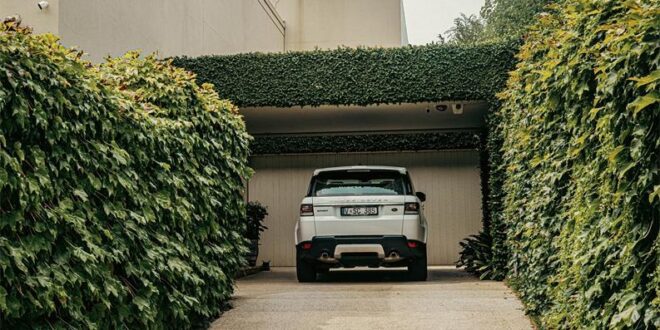Your garage might not be the first place you think of when it comes to waterproofing, but it should be. Whether it’s rain, snow, or humidity, water can creep into your garage and cause all sorts of damage if left unchecked.
From rusted tools to structural damage and mold growth, water issues can turn a functional space into a costly headache. The good news? With a few strategic moves, you can waterproof your garage and keep it protected from the elements.
Identify Potential Water Entry Points
The first step in garage waterproofing is knowing where the water is coming from. It could be seeping in through cracks in the foundation, gaps around the garage door, or even leaking through the roof. Identifying the weak points in your garage will help you focus your waterproofing efforts where they’re most needed.
Take a look at:
- The foundation: Cracks in the foundation can allow water to seep in from below.
- The walls: Water can enter through gaps around windows, doors, or vents.
- The roof: Leaky roofs or clogged gutters can let rainwater pour into your garage.
Once you’ve pinpointed the trouble areas, you can move on to fixing them.
Seal Cracks in the Foundation and Walls
Cracks in your garage’s foundation or walls are like open invitations for water to sneak in. If you spot any, it’s crucial to seal them as soon as possible to prevent moisture from entering and causing damage over time.
You can use a concrete crack filler or waterproof sealant to fill in these gaps. Make sure to clean the area first and allow the sealant to dry completely. For larger cracks or more serious damage, it might be worth consulting a professional to ensure the repair is durable and long-lasting.
Install Proper Drainage
Without proper drainage, water can easily pool around your garage and find its way inside. Installing a drainage system ensures that water is directed away from your garage, preventing potential flooding or seepage.
Consider:
- Gutters and downspouts: Make sure your garage has gutters and downspouts to divert rainwater away from the building. If they’re clogged or missing, water can run directly down the walls and into your garage.
- French drains: These are trenches filled with gravel and a perforated pipe that direct water away from the foundation, helping to prevent water buildup around your garage.
Good drainage is a key part of keeping your garage dry, especially during heavy rainstorms.
Waterproof the Floors
Garage floors are particularly susceptible to water damage, especially if water seeps up from the ground. Concrete floors can absorb moisture over time, which can lead to cracks, mold, and mildew if left untreated.
To protect your floors, you can apply a concrete waterproofing sealant. This sealant acts as a barrier between your garage floor and any moisture that tries to creep in. It’s relatively easy to apply and can save you from bigger issues down the road. Plus, it helps keep the floor looking fresh and clean.
Upgrade the Weatherstripping on Your Garage Door
Your garage door is one of the main entry points for water, especially if the weatherstripping is worn or missing. Weatherstripping forms a seal between the garage door and the ground, preventing rainwater and snowmelt from getting inside.
Check the current weatherstripping on your garage door. If it’s cracked, peeling, or worn, it’s time for a replacement. Weatherstripping is inexpensive and easy to install, but it can make a world of difference when it comes to keeping water out of your garage.
Consider Adding a Vapor Barrier
If your garage is particularly humid or prone to moisture, installing a vapor barrier can help control the dampness. Vapor barriers are sheets of plastic or foil that are installed on the walls or floors to prevent moisture from getting through. This can be especially helpful in climates with high humidity or garages that are used for storage, as it keeps the air dry and reduces the chance of mold and mildew forming.
Ensure Proper Ventilation
Good ventilation is an often overlooked aspect of keeping your garage dry. Poor airflow can trap moisture inside, leading to condensation buildup, which can cause mold, mildew, and rust.
If your garage lacks ventilation, consider installing vents or an exhaust fan. This will allow moisture to escape and keep the air circulating, helping to reduce humidity and condensation. If your garage has windows, keeping them open on dry days can also help ventilate the space.
Inspect and Maintain the Roof
If water is getting into your garage from above, your roof may be the culprit. Inspect your garage roof for any signs of damage, such as missing shingles, holes, or cracks. Even a small leak can let in enough water to cause serious damage over time, so it’s important to address any roofing issues as soon as possible.
Additionally, make sure your gutters are clear of debris. Clogged gutters can cause water to overflow and run down the side of your garage, increasing the chance of leaks.
Stay One Step Ahead of Water Damage
Waterproofing your garage isn’t just about preventing damage today—it’s about protecting your space for the long haul. By sealing cracks, installing proper drainage, upgrading your weatherstripping, and taking care of your roof, you can keep water at bay and avoid costly repairs.
 khamush.com Lifestyle | Motivation | Poems
khamush.com Lifestyle | Motivation | Poems



